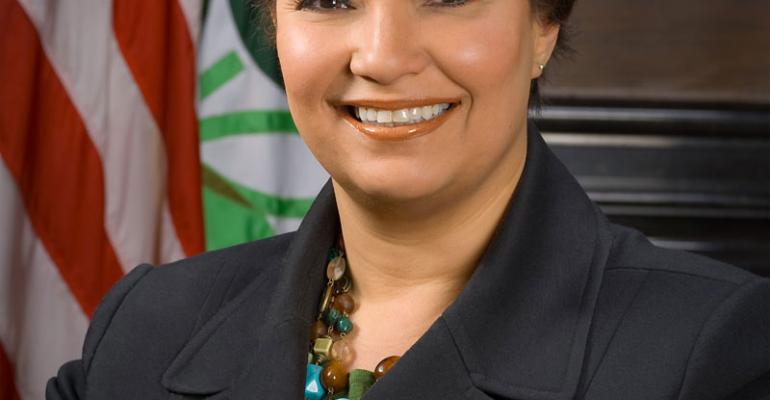The White House today finalizes an historic new federal fuel-economy standard of 54.5 mpg (4.3 L/100 km) by 2025, a rule expected to save consumers billions of dollars at the pump but cost auto makers as much in technology investment to remain compliant.
The latest joint rulemaking from the U.S. National Highway Traffic Safety Admin. and Environmental Protection Agency comes as auto makers enter the second model year of fuel-economy regulations calling for 35.5 mpg (6.6 L/100 km) by 2016.
The 2025 light-vehicle rule equates to carbon-dioxide emissions levels of 163 g/per mile, according to the Union of Concerned Scientists, which contributed to the rulemaking through the official docket.
It doubles the corporate average fuel economy regulators currently require the industry to achieve.
Auto makers generally have endorsed the latest rules and during negotiations with NHTSA and the EPA in recent months won a key “mid-term report,” where stakeholders in 2021 will re-examine how well the rules are working.
One concern would be whether over time the coming technologies anticipated to save fuel and trim CO2 emissions will have advanced enough to keep up with the tightening regulations.
The new rules are expected to cost auto makers nearly $160 billion to implement.
“These standards are achievable and cost-effective,” says EPA Administrator Lisa Jackson, noting the 13 major auto makers in the U.S. building 90% of vehicles sold signed on for the rules.
A number of U.S. dealers and some foreign auto makers and expert analysts criticize the rulemaking, saying it will make cars too costly for average Americans and the “footprint-based” regulations favor the truck-heavy Detroit Three.
Each auto maker will have an individual mark to attain, some lower than others because their fleets contain a greater share of less-fuel-efficient trucks.
Critics also say if gasoline prices do not increase alongside the standards, buyers will drop out of the market and shock the economy.
U.S. Department of Transportation Secretary Ray LaHood says the rules will spur innovation.
“It will give consumers more types of vehicles to choose from in the future,” LaHood says during conference call with journalists earlier today to discuss the new rules. “And as an added benefit, this era of innovation may lead to new jobs in industry.”
The UCS estimates the 2025 CAFE rules will save 1.5 million barrels of oil per day, or about 23 billion gallons (87.1 billion L) of gasoline annually by 2030 and trim CO2 emissions 280 million tons (254 million t).
“These fuel standards represent the single most important step we’ve ever taken to reduce our dependence on foreign oil,” President Barack Obama says in a statement accompanying release of the rules. “It’ll strengthen our nation's energy security, it's good for middle-class families and it will help create an economy built to last.”
Michelle Robinson, director-Clean Vehicles program at UCS, adds, “These standards will protect consumers from high gas prices, curb global-warming pollution, cut our oil use and create new jobs in the American auto industry and around the nation.”




